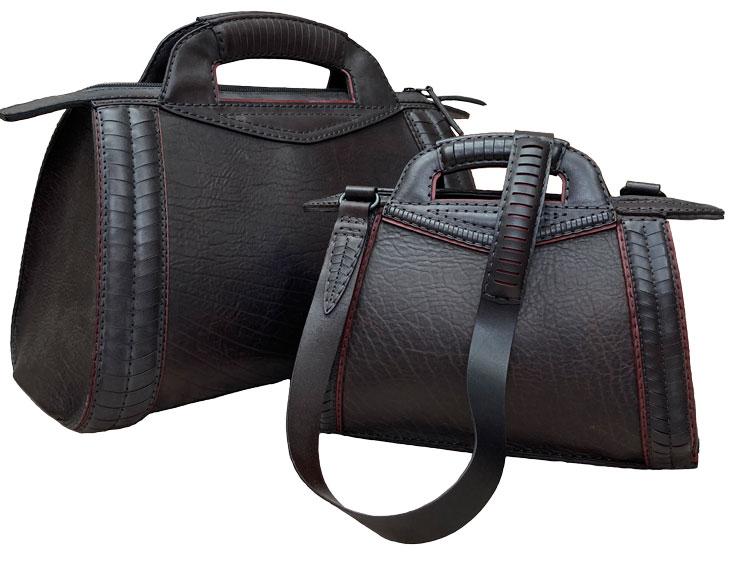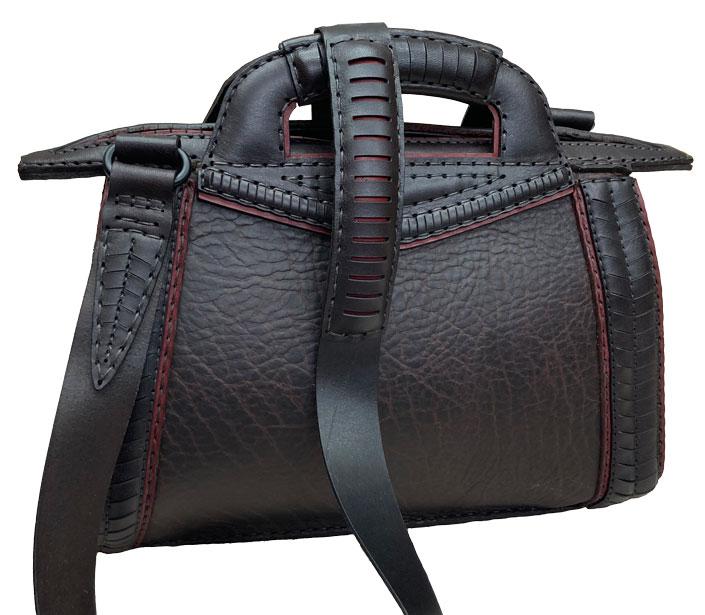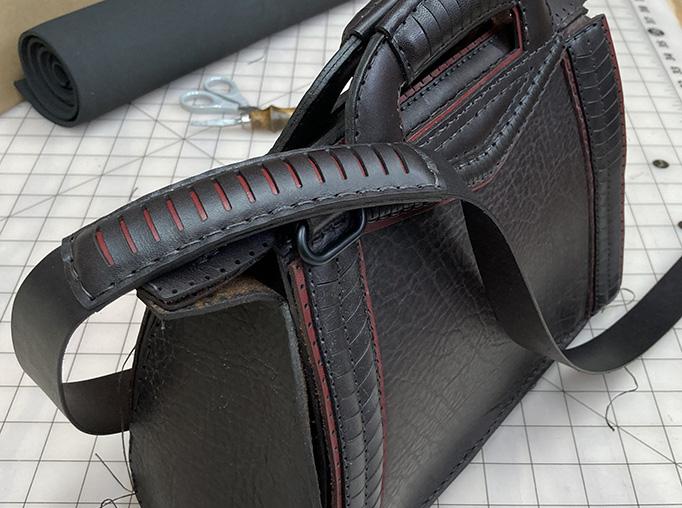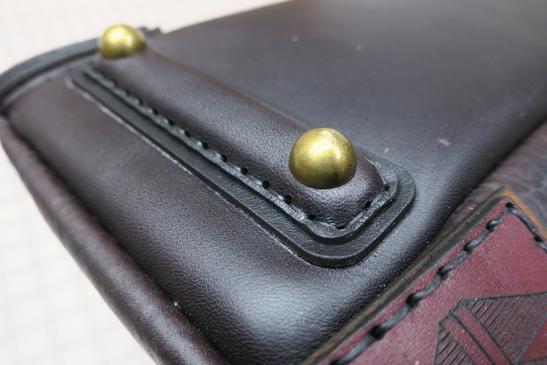
LatigoAmigo
Contributing Member-
Posts
1,012 -
Joined
-
Last visited
Content Type
Profiles
Forums
Events
Blogs
Gallery
Everything posted by LatigoAmigo
-
Need to laser print on the flesh side??
LatigoAmigo replied to BDAZ's topic in 3D Printers and Lasers
That looks pretty flimsy to me. Have you thought of farming the laser engraving out, like to a local makerspace? -
Found an old, informative, book on oiling and greasing leather
LatigoAmigo replied to Acnestis's topic in Resources
Thanks for sharing. As links can get disconnected over time, I've posted the PDF here so it will always be available on this site. The_Application_of_Oils_and_Greases_to_Leather.pdf -
When you buy leather online, it is always a bit of a gamble. I would contact Tandy to see how to return this "very low quality" side.
-
-
I have some of what you are describing, and I purchased it from Maverick Leather some years ago. A Horween latigo, it is so soft and beautiful it almost made me cry. Because latigo is a combination tanned leather (veg-tan / chrome-tan) its suppleness can vary widely, so if you contact them you should do it by phone to make sure what they have matches what you are looking for. https://maverickleathercompany.com/?s=latigo&post_type=product
-
Paraprosdokians are figures of speech in which the latter part of a sentence or phrase is surprising or unexpected and is frequently humorous. Apparently, Winston Churchill loved them. 1. Where there's a will, I want to be in it. 2. The last thing I want to do is hurt you... but it's still on my list. 3. Since light travels faster than sound, some people appear bright until you hear them speak. 4. If I agreed with you, we'd both be wrong. 5. We never really grow up -- we only learn how to act in public. 6. War does not determine who is right, only who is left. 7. Knowledge is knowing a tomato is a fruit. Wisdom is not putting it in a fruit salad. 8. To steal ideas from one person is plagiarism. To steal from many is research. 9. I didn't say it was your fault, I said I was blaming you. 10. In filling out an application, where it says "In case of an emergency, notify..." I answered "a doctor." 11. Women will never be equal to men until they can walk down the street with a bald head and a beer gut, and still think they are sexy. 12. You do not need a parachute to skydive. You only need a parachute to skydive twice. 13. I used to be indecisive, but now I'm not so sure. 14. To be sure of hitting the target, shoot first and call whatever you hit the target. 15. Going to church doesn't make you a Christian, any more than standing in a garage makes you a car. 16. You're never too old to learn something stupid. 17. I'm supposed to respect my elders, but it's getting harder and harder for me to find one now.
-
Leather is not flat, so you will have to force it somehow. You might consider bonding it to a leather stiffener-- something like this: https://www.etsy.com/listing/826447301/salpa-bonded-leather-leather-board-lb?ga_order=most_relevant&ga_search_type=all&ga_view_type=gallery&ga_search_query=leather+stiffener&ref=sr_gallery-1-13&organic_search_click=1&cns=1 There are others available, this is only a suggestion.
-
Seems to me that although you have some very nice products, most of us here are makers not buyers. Links, given time, will not work, plus this post will be buried somewhere on the site and difficult to find. I would suggest purchasing a banner ad like those shown above, so you will stand a better chance of reaching more people.
-
Amperage for a bench grinder with rubber expanding wheel
LatigoAmigo replied to cldpsu's topic in Leather Machinery
Then you answered your own question. You can always slow down the heavier duty version, but you can't increase the power of the lighter duty machine. -
1st attemp Flap Holster
LatigoAmigo replied to Bert03241's topic in Gun Holsters, Rifle Slings and Knife Sheathes
That image is in a .jfif format, and I think this site prefers images be in a .jpeg format, like this... -
How to remove Quick Rotan and Digitial
LatigoAmigo replied to HAYLEY996's topic in How Do I Do That?
Three phase power comes in different voltages and configurations, so if the voltage is higher than what your machine is rated for that could be the problem. -
You can resolve that issue with a fume extractor. I picked one up about a year ago for about $2k and it has performed flawlessly.
-
I use "neoprene sponge foam rubber" (from Amazon) and always tack it down with glue first so it stays in place, because when I sew the leather pieces together it puts a lot of pressure on the rubber. Here I've used 1/8 inch thick foam rubber on a cross-body strap (bag still under construction).
-
Tie a fiador for a bosal hackamore, I need a pattern.
LatigoAmigo replied to Garyrsmith's topic in How Do I Do That?
"Leather Braiding" by Bruce Grant was combined with "How to Make Cowboy Horse Gear" to create "Encyclopedia of Rawhide and Leather Braiding." Here is a PDF version of that book for your enjoyment. Check out page 68 for starters. Encyclopedia_of_Rawhide_and_Leather_Braiding.pdf -
Leather smell loss + skin safety - dyes, oils, finishes.
LatigoAmigo replied to BadDog's topic in How Do I Do That?
Because there are so many types of leather and tanning processes, there could be more than one correct answer to your multiple choice questions. If you seriously want a response to these (too) many questions, you might try to target them to the various categories on this forum. -
Who manufacturers Carrage hand Sewing Thread?
LatigoAmigo replied to Cowboyleatherman's topic in Suppliers
I'm intrigued. Why is the source of this thread so important? -
Golden chips.
-
What I like about Illustrator for pattern making is the "offset path" feature along with the ability to create my own pattern brushes, plus I find the layers feature invaluable. You might be able to "buy" a copy, but I have only found Illustrator available by subscription.
-
Burnishing chrome tan with veg tan liner
LatigoAmigo replied to thelinkmaster001's topic in How Do I Do That?
Looks like you've tried it all. Tokonole gives me a smooth, sealed edge, and I've learned to be happy with the results, so it works for me. This is the foot of a bag made with California Latigo from The Hide House. -
Warm up the oil (I set the bottle of neatsfoot oil in a pan of warm water for 20 minutes) before you apply it, then only apply in light coats... you don't want to saturate the leather. Then give the oil a few days to soak in and work its magic. You should see good results.
-
Burnishing chrome tan with veg tan liner
LatigoAmigo replied to thelinkmaster001's topic in How Do I Do That?
From their website: We’re very excited to announce that we now carry Toko Pro! A new edge slicking and burnishing compound that’s nearly identical in comparison to Tokonole.


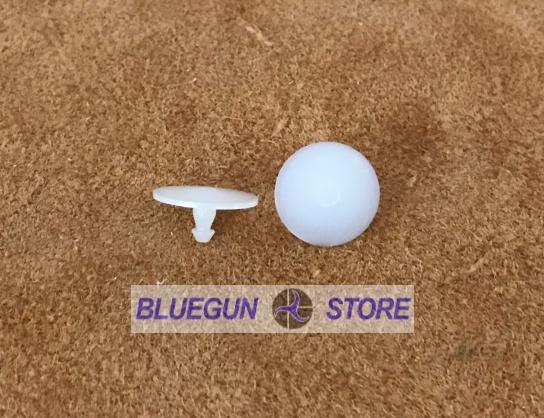

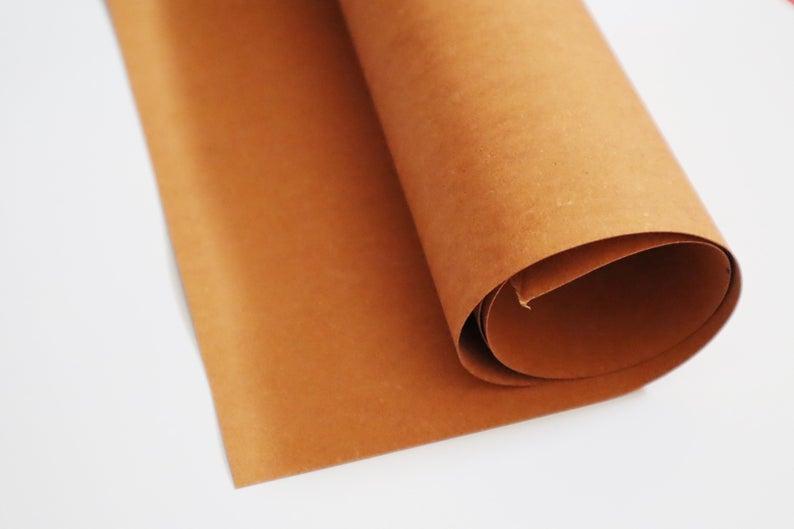
.thumb.jpg.7cc9854b0eef155a8bb0fdf010d7929c.jpg)
